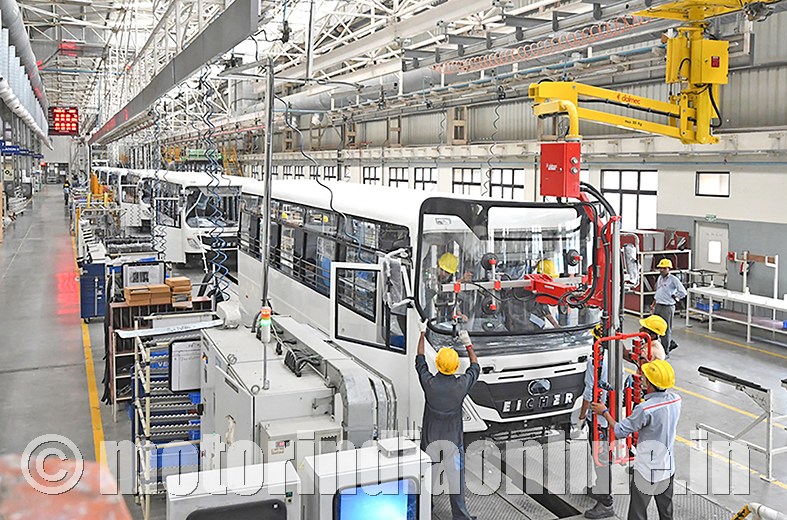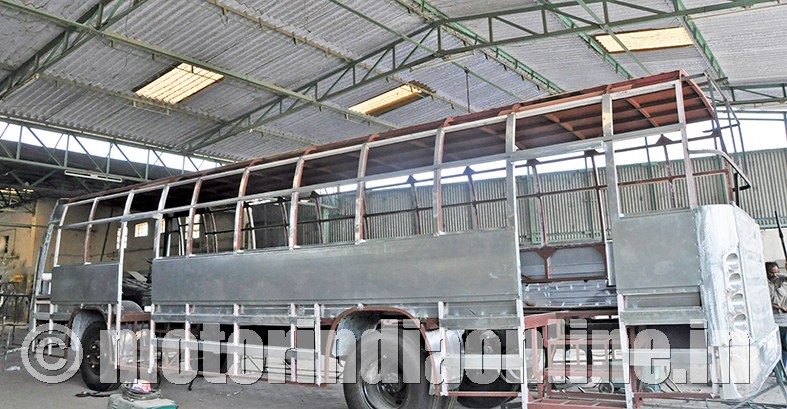In this section, we present a panoramic view of the bus industry in India, its performance, evolution and consolidation, prospects and challenges, from the views of some of the leading OEMs in the country.
Buses are the prime movers of mass mobility in the country, they are also significant in the growth and development of the domestic automotive industry. Although their production volumes are just over 50,000 units per year, the entire manufacturing process of buses and their supply chains support numerous automotive suppliers including interior components, bus body building enterprises, and so on. India is perhaps the second largest producer of buses, accounting for around 16 per cent of world’s production.
In addition, their prospective demand in the local market remains high at all times owing to poor rate of penetration of buses in the country. The industry pegs that the country has just 1.5 buses per thousand population, far lower than its alike countries like China, Japan, and South Korea having 6, 30, and 70 buses respectively per thousand population. Our country is also critically far backward in the evolution of alternative modes of mass transportation, making buses the sole lifeline meeting the mobility needs of millions of people, even in considerably-developed metro cities and urban areas.
Yet, the potential demand remains hardly realized in actual market sales of buses over the decades. The performance of this market is always cyclical, resulting in mediocre year-on-year growth. Although the period since the beginning of this century has shown considerable improvement, experts predict only a moderate growth of (CAGR) 3.8 per cent for the period of 2016-2020 in spite of forecasted demand recovery and surge in Government funding to induct new buses.
In FY 2017-18, the Indian bus market showed de-growth in medium and heavy duty bus segment unlike the previous fiscal. It lost its share of 48 per cent to 42 per cent, largely due to lower demand from STUs. Price hike due to GST is also a major inhibiting factor. However, the light duty buses increased their segment share from 51 to 58 per cent, thanks to surge in demand from private operators especially in the school, staff, and tour applications. The 9-metre buses in particular are contributing to explosive growth, as the segment is witnessing huge cost standardization and consolidation across all OEMs.
Nevertheless, the sales performance the bus industry has posted in the month of July 2018 shows sign of uptick revival in terms of STU purchases and other private demands. The cumulative CV sales in India is showing almost double-digit growth rate month-on-month since the beginning of this year, of which buses constitute around 20 per cent to all sales.
Challenging times for small-sized bus body builders
The unorganized bus body making industry in India is undergoing a decisive juncture at present – it can either leap forward in terms of quality and technology, supported by the growth in demand, or face an imminent danger of losing business and pushed aside by rivals. Small time fabricators form a major chunk of bus building industry in the country, garnering a notable market share in terms of volumes built, while also supporting employment to thousands of workers.
Yet, their hold in the industry appears steadily losing, even though bus body building is predicted to grow over 20 per cent in the next ten years. The stock bus building towns of Karur and Jalandhar are witnessing players exiting the business, who once commanded the industry as a whole for more than five decades. Thanks to changing market preferences and more standardization, unfortunately though.
For an industry that lacked any uniform body norms and safety standards, the new bus body code in effect since last year is posing tons of challenges. Apart from fixing standards on various vehicular parameters, the bus code has led to the assessment of local fabricators on various norm-compliance, their facilities, component-sourcing and management practices, and so on through evaluators appointed by National Accreditation Board and zonal boards. Many body builders fall short in such evaluations, while compliance requires additional investments and resource management that these players are wary of.
Further, the market preference in also changing significantly. OEMs and suppliers are fast advancing complicated technologies and electronics in their bus products, modern tailor-made bus chassis are no more easygoing for local fabricators. Now that every bus OEMs have their dedicated bus building operations or sophisticated partners, the chassis business is hardly entertaining for them as well. They tend to focus more on fully-built buses sales rather than just chassis.
Moreover, the buyers tend to appreciate fully-built buses these days, thanks to value-addition offered by OEMs and large builders. They offer buses in highly competitive prices as well, to which small time fabricators can hardly match for. The latter’s manufacturing processes have become costlier, and lower volume capacities put them at disadvantage.
GST rates pinch bus transportation
Under the GST regime, buses have become more expensive, as they now attract an additional 15 per cent cess over and above the GST rate of 28 per cent. They now fall under the same category as luxury vehicles and hybrids for the sake of taxation. This has hiked the upfront cost of new buses, impacting manufacturers and buyers, and the bus transportation ultimately.
Higher tax rates will prevent penetration of buses in the country, adversely affecting the efforts taken by the government and industry to promote public transport. This impact can be traced in the brief period of lull in cumulative sales of buses in FY 2018, after a strong recovery in the previous fiscal. Although the industry may gradually actualize the price hike, higher taxation for buses can neither help the industry come out of its moderate growth and realize its true potentials, nor in advancing public transportation through buses in the country.

